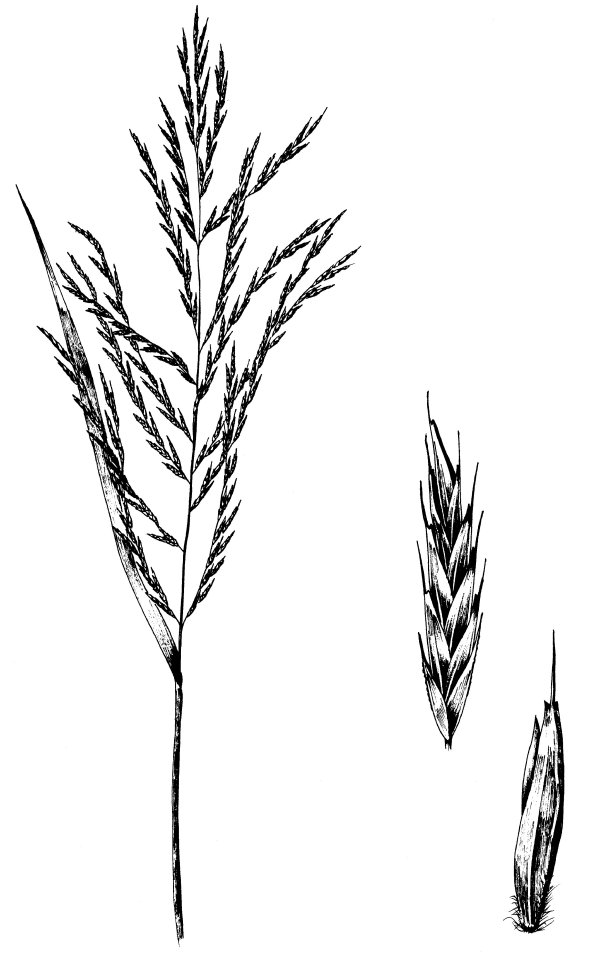
Bromus commutatus Schrad. Hairy Brome Habit: Annual. Culms: 30-110 cm. tall, tufted, erect or decumbent at the base. Blades: 5-18 cm. long, 2-7 mm. wide, flat, strongly nerved, somewhat rough, from sparsely to almost densely short-pubescent. Sheaths: Shorter than internodes, strongly nerved, sparsely to almost densely short-pubescent, the hairs usually retrorsely pilose. Ligule: Membranous, about 2 mm. long. Inflorescence: Open panicle 10-15 cm. long, finally drooping, the lower branches with 1 or 2 spikelets. Spikelets: 6-10-flowered, 13-25 mm. long, 6-7 mm. wide; somewhat flattened, the lemmas thinner, not inrolled at the margin, and the florets more closely imbricate so that light does not come through the spikelet as in B. secalinus. Glumes: Nearly equal, the first narrow, acute, 3-nerved, about 5-6 mm. long, the second broader, subacute, 7-9-nerved, 7-8 mm. long. Lemmas: 7-10 mm. long, thin, acute, 7-9-nerved, not inrolled, minutely scabrous, less plump and more overlapping than in B. secalinus; the straight awn usually 7-9 mm. long. Palea: Nearly as long as its lemma, ciliate on the 2 keels. Fruit: Grain furrowed, adhering to the palea. Habitat: A weed in fields and waste place. May-July. Kansas Range: Scattered in east half. Synonyms: Bromus commutatus Schrad. var. apricorum Simonkai